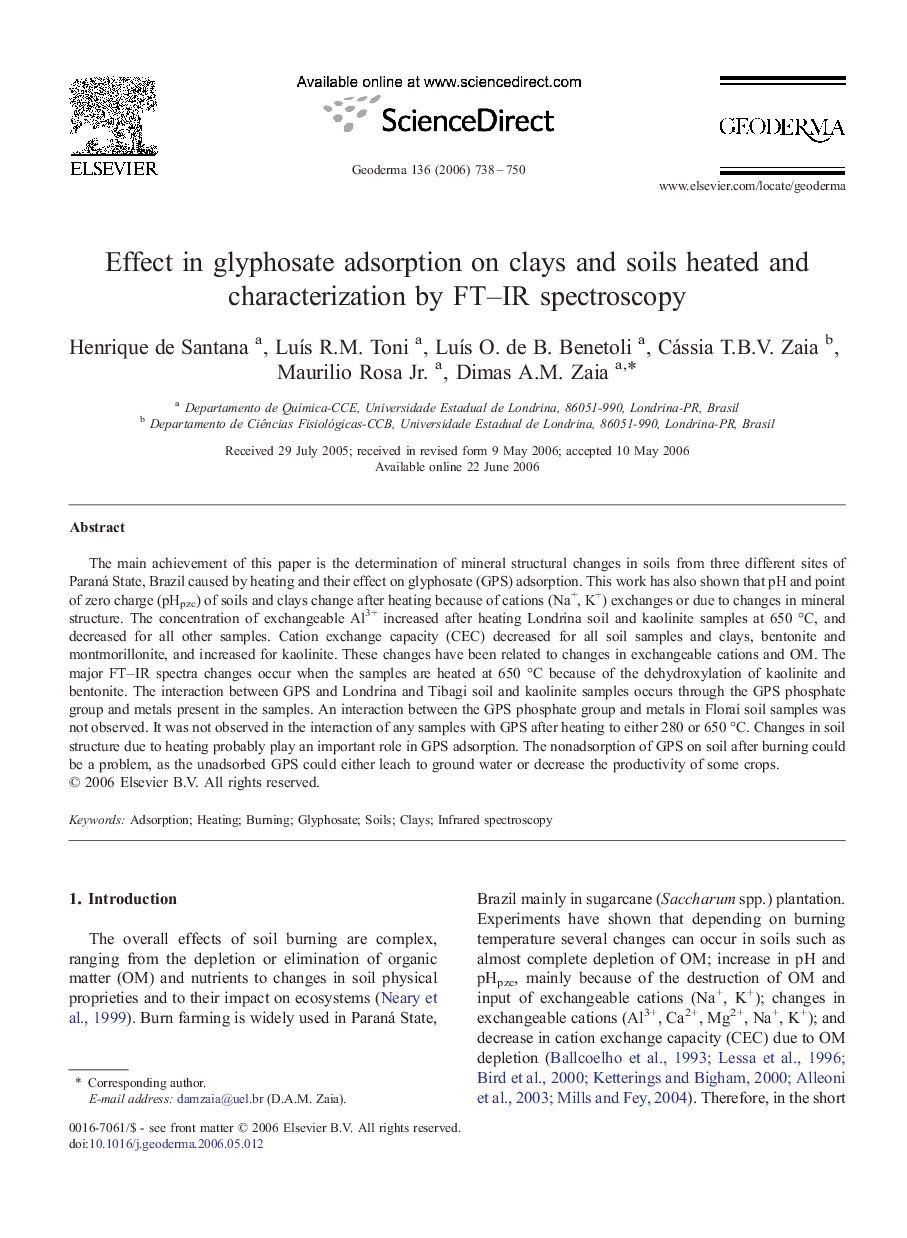| Article ID | Journal | Published Year | Pages | File Type |
|---|---|---|---|---|
| 4575646 | Geoderma | 2006 | 13 Pages |
The main achievement of this paper is the determination of mineral structural changes in soils from three different sites of Paraná State, Brazil caused by heating and their effect on glyphosate (GPS) adsorption. This work has also shown that pH and point of zero charge (pHpzc) of soils and clays change after heating because of cations (Na+, K+) exchanges or due to changes in mineral structure. The concentration of exchangeable Al3+ increased after heating Londrina soil and kaolinite samples at 650 °C, and decreased for all other samples. Cation exchange capacity (CEC) decreased for all soil samples and clays, bentonite and montmorillonite, and increased for kaolinite. These changes have been related to changes in exchangeable cations and OM. The major FT–IR spectra changes occur when the samples are heated at 650 °C because of the dehydroxylation of kaolinite and bentonite. The interaction between GPS and Londrina and Tibagi soil and kaolinite samples occurs through the GPS phosphate group and metals present in the samples. An interaction between the GPS phosphate group and metals in Floraí soil samples was not observed. It was not observed in the interaction of any samples with GPS after heating to either 280 or 650 °C. Changes in soil structure due to heating probably play an important role in GPS adsorption. The nonadsorption of GPS on soil after burning could be a problem, as the unadsorbed GPS could either leach to ground water or decrease the productivity of some crops.
